

| Oh no Don't let the rain come down My roof's got a hole in in And I might drown Brothers Four |

Our flat roof was 40 years old. It was installed around 1980 and during the course of its long and prosperous life it had sprung a few leaks from time to time which I could easily fix here. It consisted of the older style tar and gravel built up which, when properly taken care of, can last a long time. But the biggest problem was keeping the moss away. Other than that it was an excellent roof. However three of the four roof corners were showing rot which meant that the many years of UV rays had finally affected areas of the roof at the edge which were not protected by gravel.
We decided that this summer we would get a new roof. Our roof size is 1500 square feet and the pitch was 1:12 (one inch rise on a twelve inch run). We jumped into the research on new roofing and there's a lot of it in the web. After some time we decided that a torch down granulated bitumen surface would be the best and have the longest life if properly managed (It also happened to be the cheapest). The white granulation protects well against UV light and is a natural descendent to what we had before. We got about four bids and finally selected a roofing company out of Everett. They did the job in two days. I had them add more scuppers at each corner so there would be six drains and less chance for water pooling.
Most of the
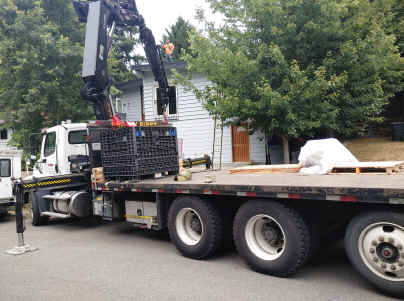 A big truck arrived and unloaded all the
material. You can see the action here and here.
A big truck arrived and unloaded all the
material. You can see the action here and here.
All the bitumen, scuppers and vents were put on the roof. The granulated bitumen was the biggest cost. There’s a lot of other costs: scuppers, down spouts, flashings, rotten spot repair, vents and OSB plywood. Almost any roof built around a damp climate will have gaps between the boards because wood expands and contracts. If you have access to your attic you can see this. The OSB is necessary or the bitumen roof will began sagging after awhile into the board gaps. The OSB was definitely necessary.
You can also just about bet that each corner of your roof overhang will have some rot if you have a flat roof. Mine did and I was surprised because the flat roofs readily collect water at the corner overhang where there were no scuppers (I had all the scuppers moved to the corners). Most of the other things were not that expensive. If somebody quotes you a price be prepared to pay more because they probably won’t mention the OSB or some of the other possible problems that come up during a roof job.
Torch down roofing consists of nailing down a membrane sheet of resin and then rolling onto that sheet a heavy layer of bitumen asphalt. The asphalt has a surface of granules in it that repel UV light. As the roofing is unrolled it is fired and melts into the resin.


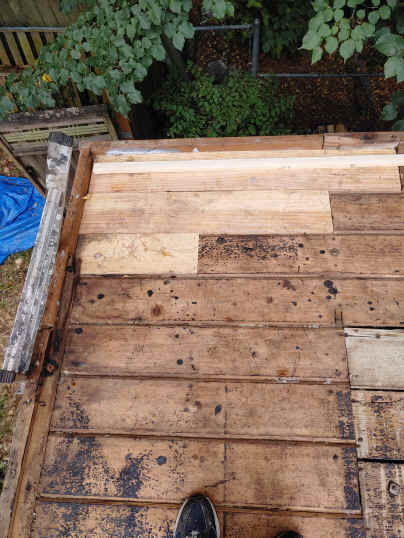
Torch down roofing consists of nailing down a membrane sheet of resin and then rolling onto that sheet a heavy layer of bitumen asphalt. The asphalt has a surface of granules in it that repel UV light. As the roofing is unrolled it is fired and melts into the resin.
These guys are in action here. The rot was replaced on all corners.

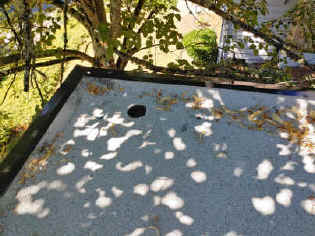

I re-installed all the downspout because the scuppers were larger for better drainage. they were also placed in different locations.
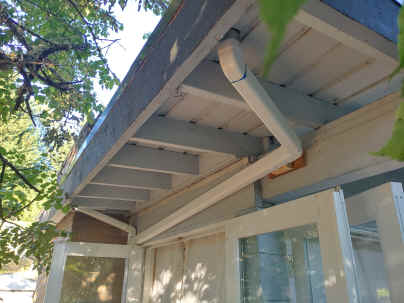
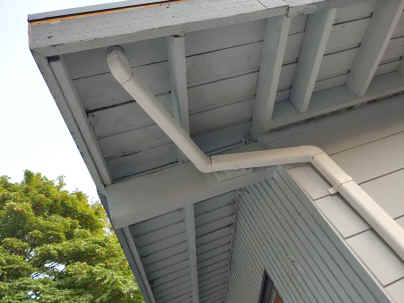
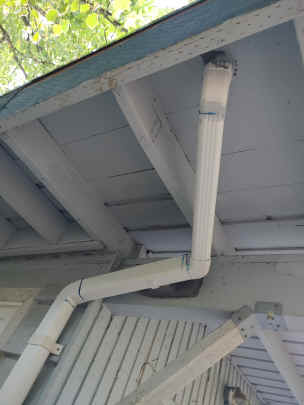
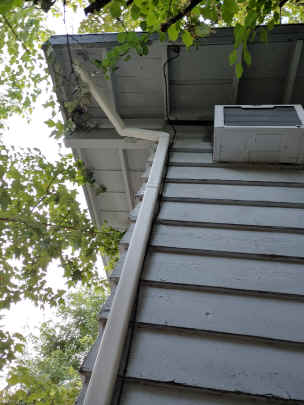
I repainted the chimney cap. It really needed a new paint job. The flashing was done as part of the roof job.
